When it comes to indoor gardening, the challenge of nurturing thriving greenery in the dimmest corners of your home is not as daunting as it may seem. While it’s true that all plants require some degree of light to survive, this collection of botanical wonders make the most of what little light they can get. These low-light champions come in various shapes, sizes, and hues, bringing life to the often-overlooked areas of your living space. Join us as we explore these shade-loving marvels, noting their water requirements and how friendly they are to pets. Get ready to unlock the potential of low-light living spaces with a fresh burst of botanical beauty.
1. Lucky Bamboo
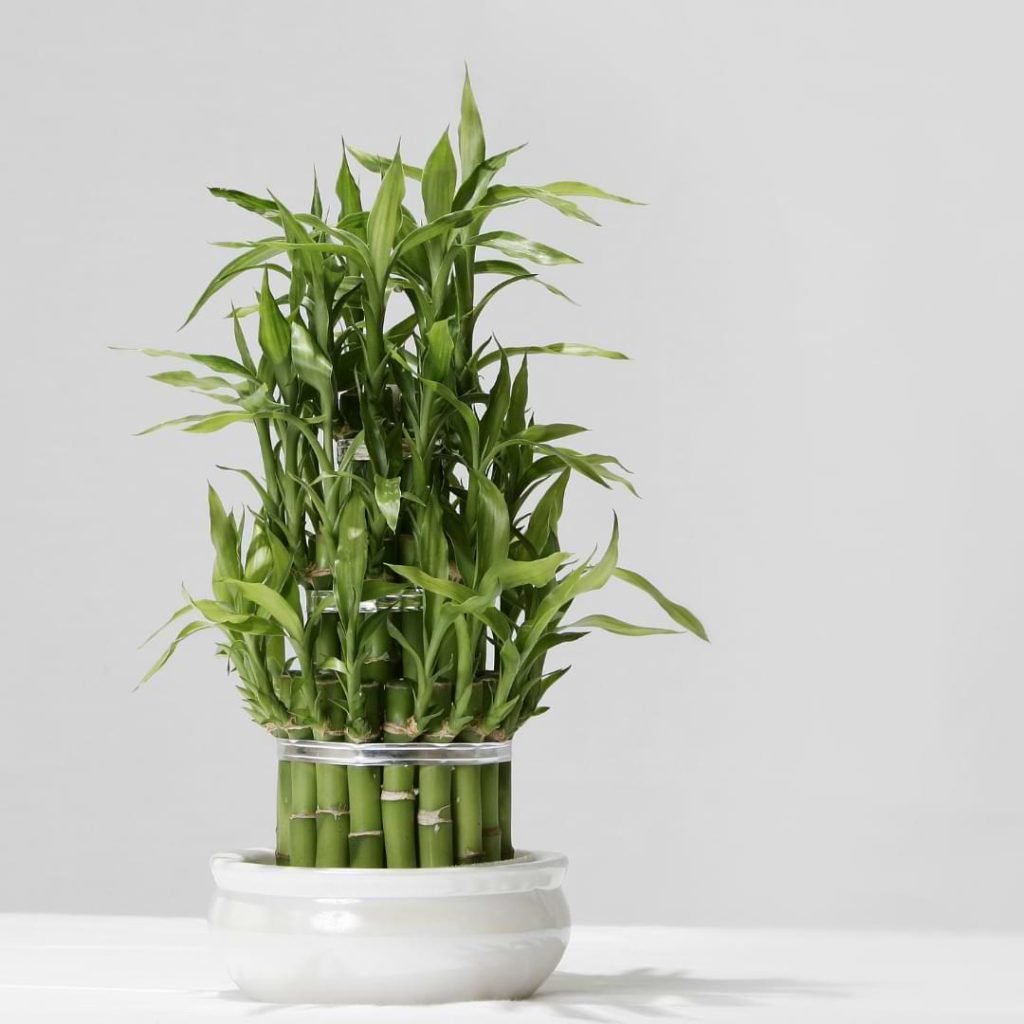
In Feng Shui, Lucky Bamboo is believed to channel positive energy through its hollow stem, making it a popular indoor plant. It’s actually not a bamboo at all but a Dracaena, part of the asparagus family. It thrives in low-light conditions and requires minimal care.
Toxicity to pets: Toxic to pets if ingested.
Water requirements: Lucky Bamboo prefers to grow in water, so it should be kept in a container with enough water to submerge its roots. Change the water every 2-4 weeks to prevent stagnation and maintain its health.
2. Peace Lily

Graceful and elegant, Peace Lilies with their lush green foliage and charming white blooms are cherished indoor plants. Exposure to intense sunlight can scorch their leaves, so they’re happiest when blooming in a dim room.
Toxicity to pets: Toxic to pets if ingested.
Water requirements: Keep soil moist but empty out standing water.
3. Snake Plant

The Snake Plant, also known as Mother-in-Law’s Tongue, grows tall, sturdy leaves with striking variegation. It’s one of the most efficient plants at cleaning toxins from the air, so it can improve the health of your home as well as the aesthetic. While Snake Plants enjoy sunlight, they will tolerate light shade and still continue to grow.
Toxicity to pets: Toxic to pets if ingested.
Water requirements: Water every 2 weeks, allowing the soil dry out between.
4. Cast Iron Plant
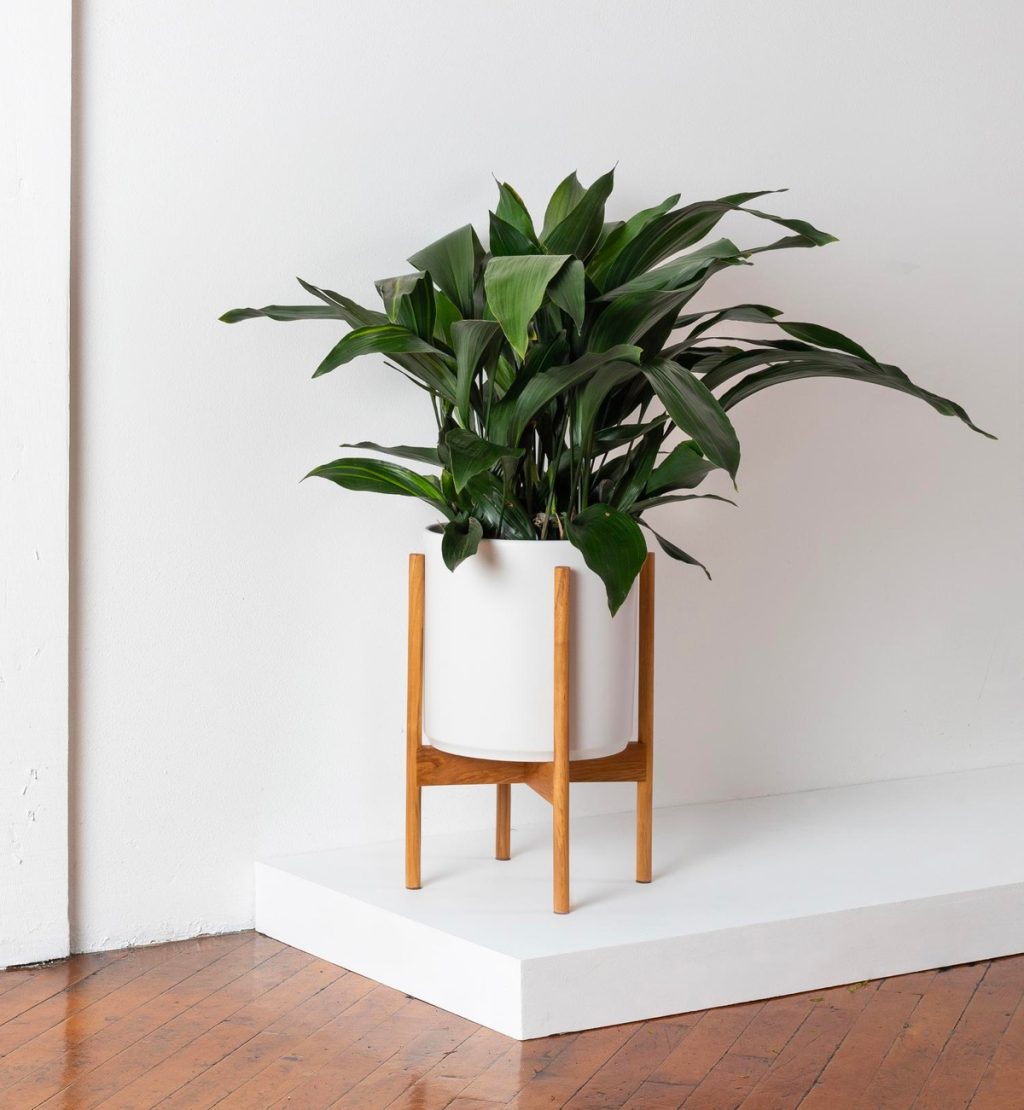
The Cast Iron Plant is a symbol of endurance with its bold, dark-green foliage. It’s a low-maintenance choice for homes and offices, capable of withstanding neglect. Cast-iron Plant leaves can burn in direct sun, so they’re happiest near north-facing windows or deep in the heart of a room layout.
Toxicity to pets: Non-toxic to pets.
Water requirements: Keep the soil lightly moist but ensure there is good drainage.
5. ZZ Plant
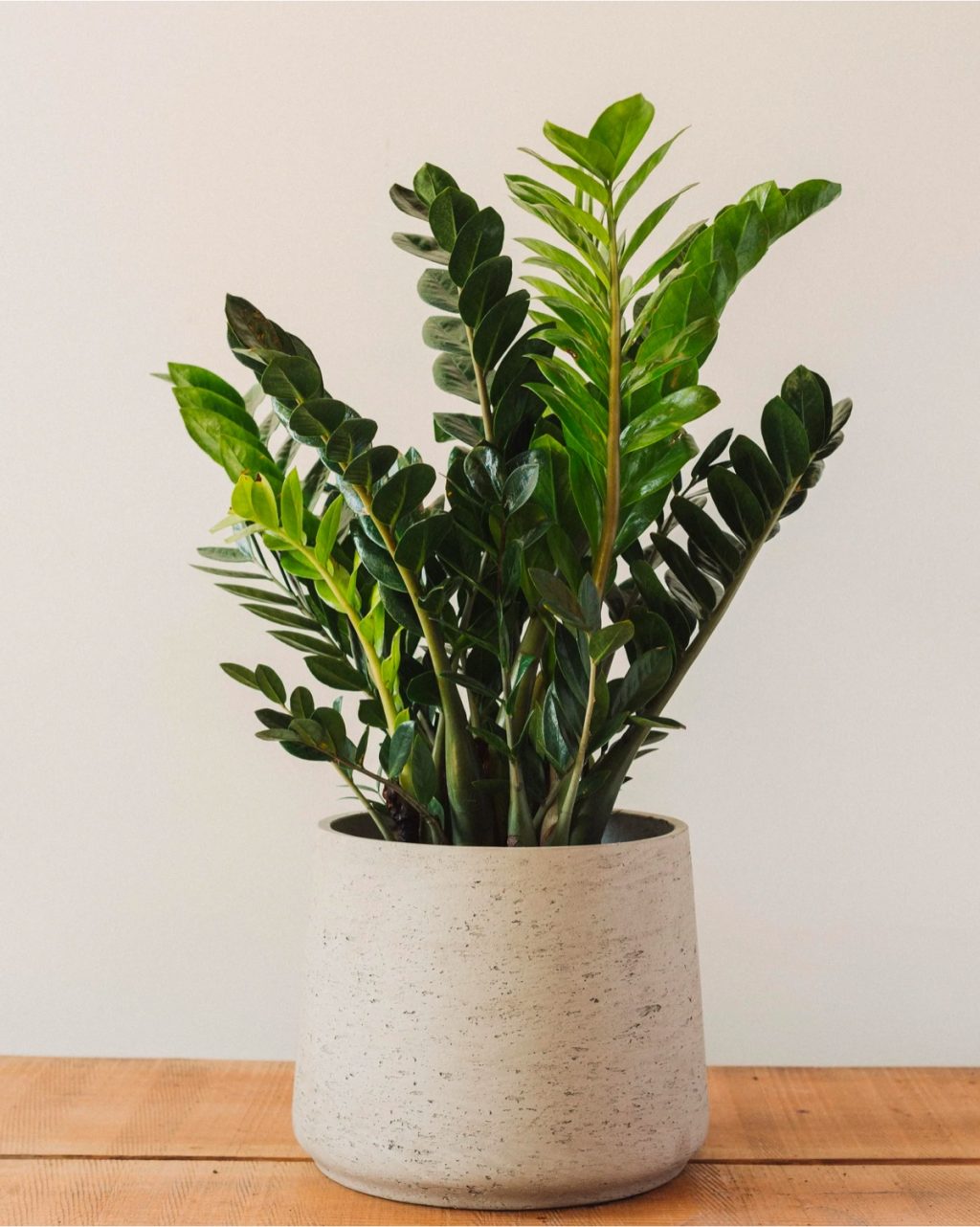
Nicknamed the “Eternity Plant” due to its resilience, the ZZ Plant is perfect for busy plant lovers. They’ve been known to endure weeks without water and tolerate the lowest light conditions pretty well, making them the “plant that time forgot” in your home.
Toxicity to pets: Toxic if ingested. Exposure causes minor skin and eye irritation.
Water requirements: Water every 2-3 weeks, allowing the soil to dry out between.
6. Spider Plant
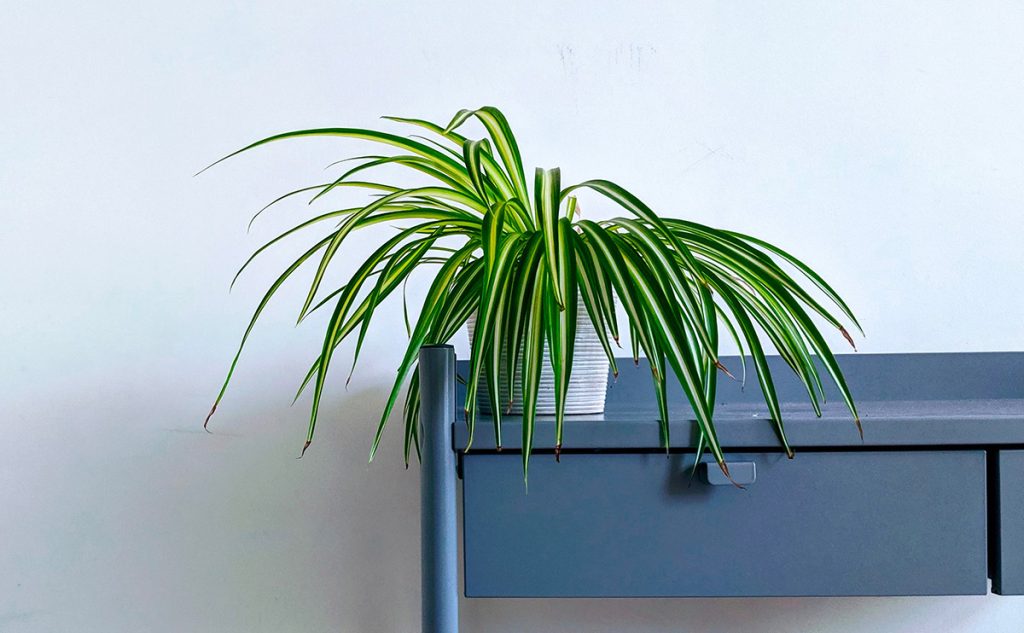
Arching green and white striped leaves, make the familiar Spider Plant a spirited addition to your indoor garden. Plus, it’s a breeze to care for, making it ideal for new plant parents. Spider Plants do well in low light, though you may find their stripes aren’t quite so bright.
Toxicity to pets: Non-toxic to pets.
Water requirements: Water lightly each week, less in autumn and winter.
7. Golden Pothos

Heart-shaped leaves with striking variegated patterns make the Golden Pothos an aesthetic delight. Beyond aesthetics, it’s fine in low light and is a powerhouse in air purification, removing nasty pollutants from your home. It’s sometimes referred to as Devil’s Ivy because it is nearly impossible to kill.
Toxicity to pets: Toxic to pets.
Water requirements: Water every 1-2 weeks, allowing soil to dry out between.
8. Philodendron
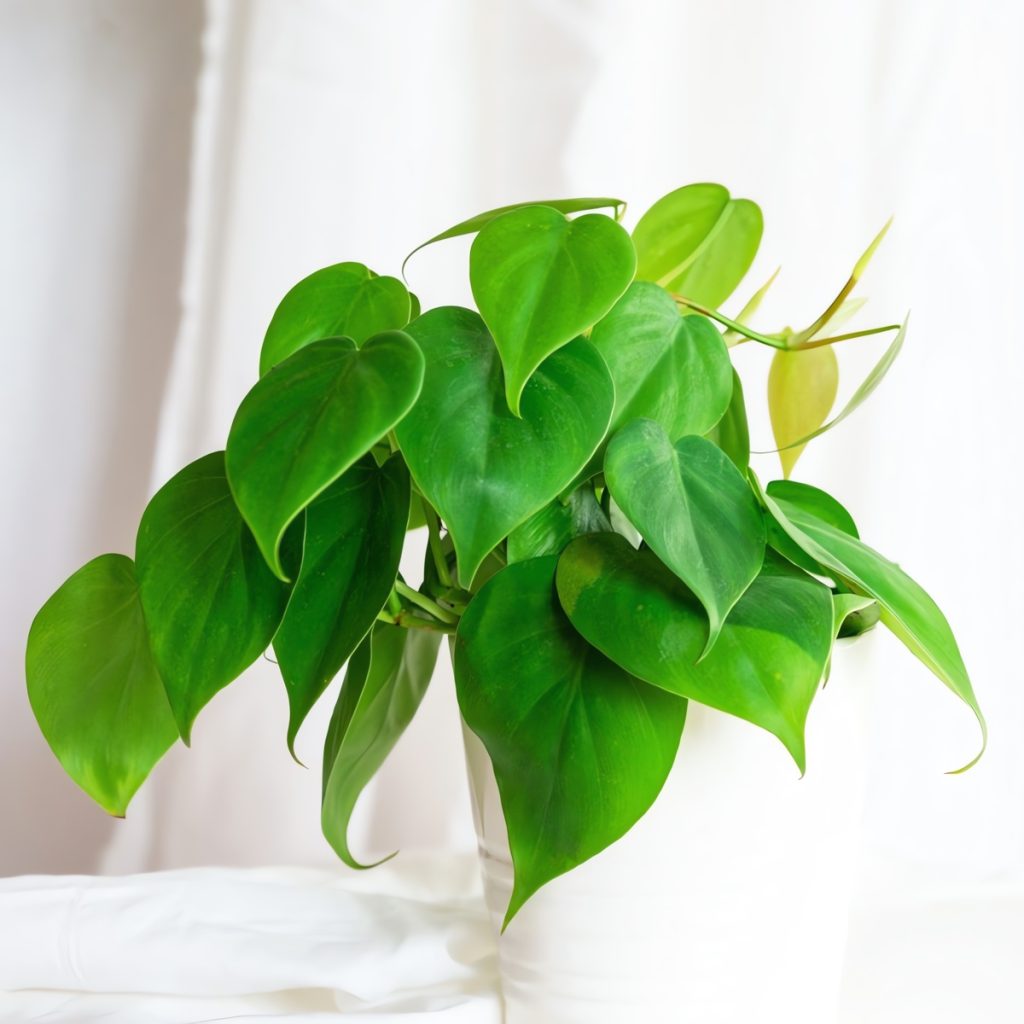
Imagine the Philodendron as the Golden Pothos’s stylish cousin. They share those lovely heart-shaped leaves, but the Philodendron shows off with a glossier, sleeker look. Plus, like its relative, it’s a champ at purifying your air and thriving indoors in low light.
Toxicity to pets: Toxic to pets.
Water requirements: Water weekly, less frequently in wintertime.
9. Parlor Palm
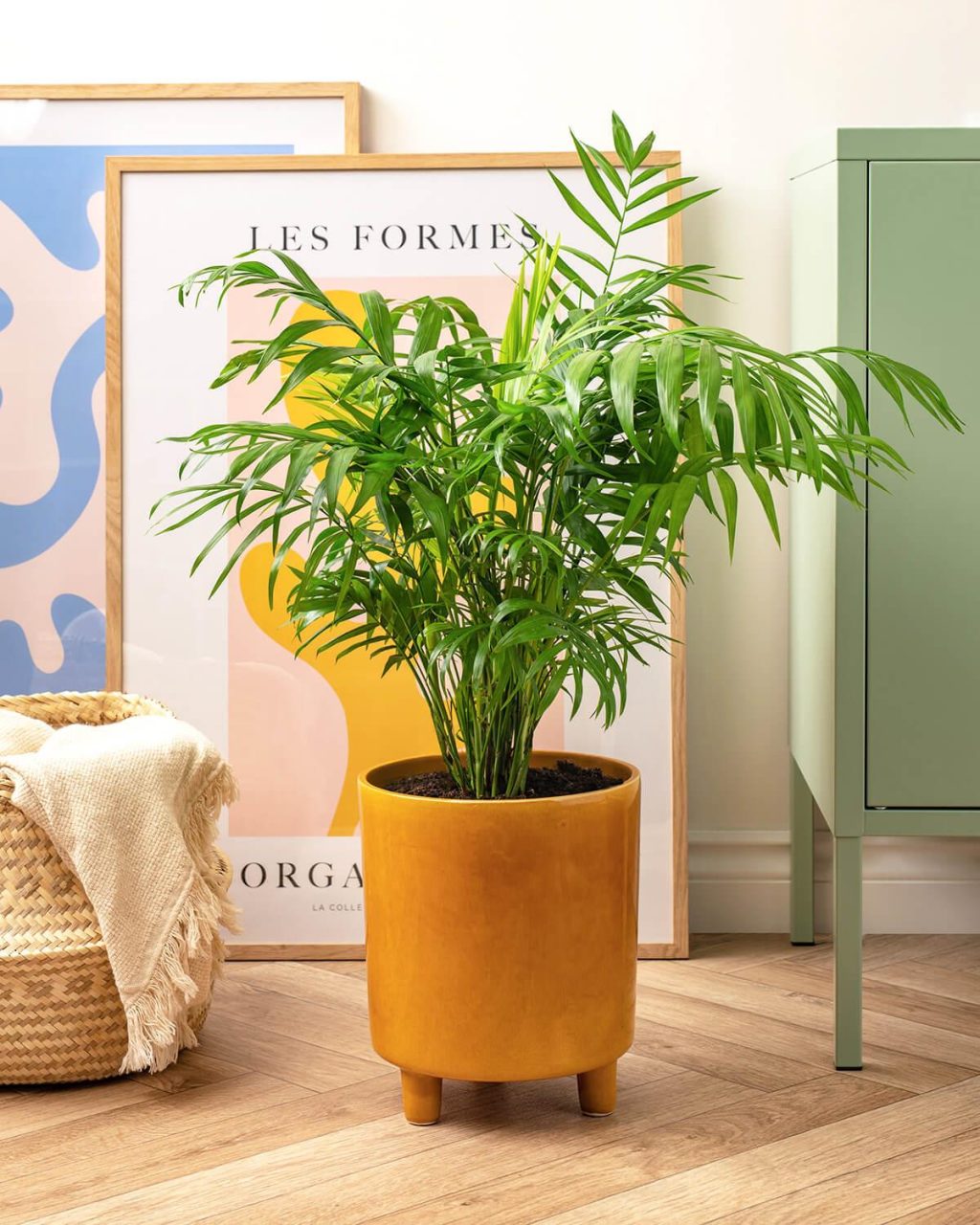
Meet the Parlor Palm, your ticket to adding a touch of tropical elegance to your living space. With its lush, feathery fronds, it’s like having a mini paradise indoors. It thrives in humid conditions, making it a fantastic addition to a low-light bathroom, where it can transform tub-time into a tranquil retreat.
Toxicity to pets: Non-toxic to pets.
Water requirements: Water when the top few centimeters of compost have dried out.
10. Chinese Evergreen Aglaonema

The Chinese Evergreen Aglaonema has artistic variegated leaves like living paintings. Plus, it’s a certified clean-air agent, removing toxins with flair. Low-light lover and easygoing, it’s a strong choice for trendy, carefree living spaces.
Toxicity to pets: Toxic to pets.
Water requirements: Water every 2 weeks. Avoid pooled water at the bottom.
11. Prayer Plant
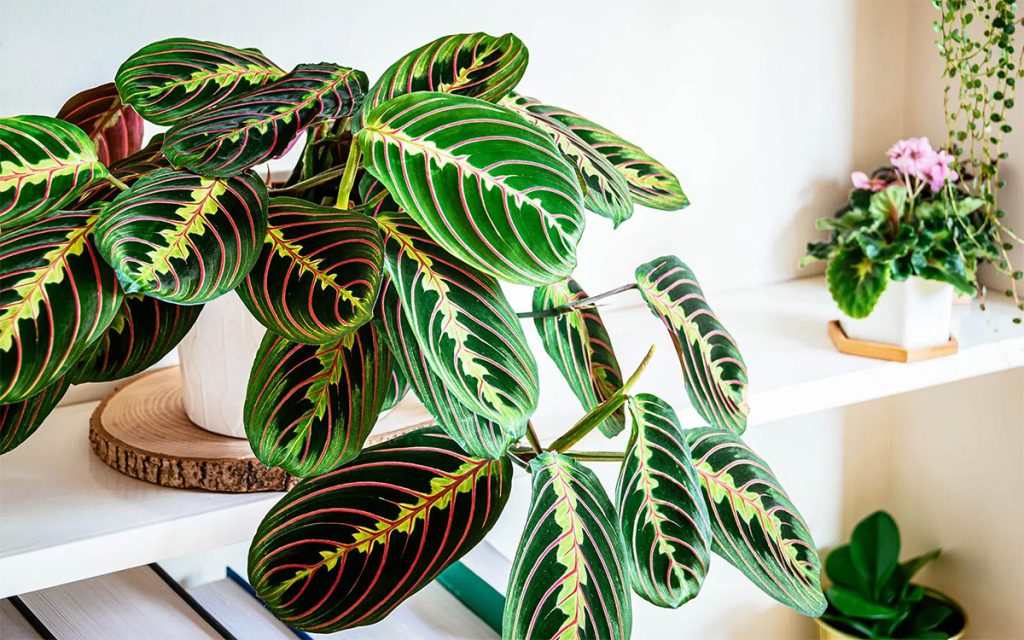
Introducing the Prayer Plant, the botanical acrobat of your indoor garden. Its leaves fold up at night, like hands in prayer. During the day, they spread wide, embracing sunlight. This botanical dancer thrives in medium light away from the intensity of direct sunshine and tolerates low light well.
Toxicity to pets: Non-toxic to pets.
Water requirements: Water every 1-2 weeks, allowing the soil to dry out halfway down.
12. English Ivy
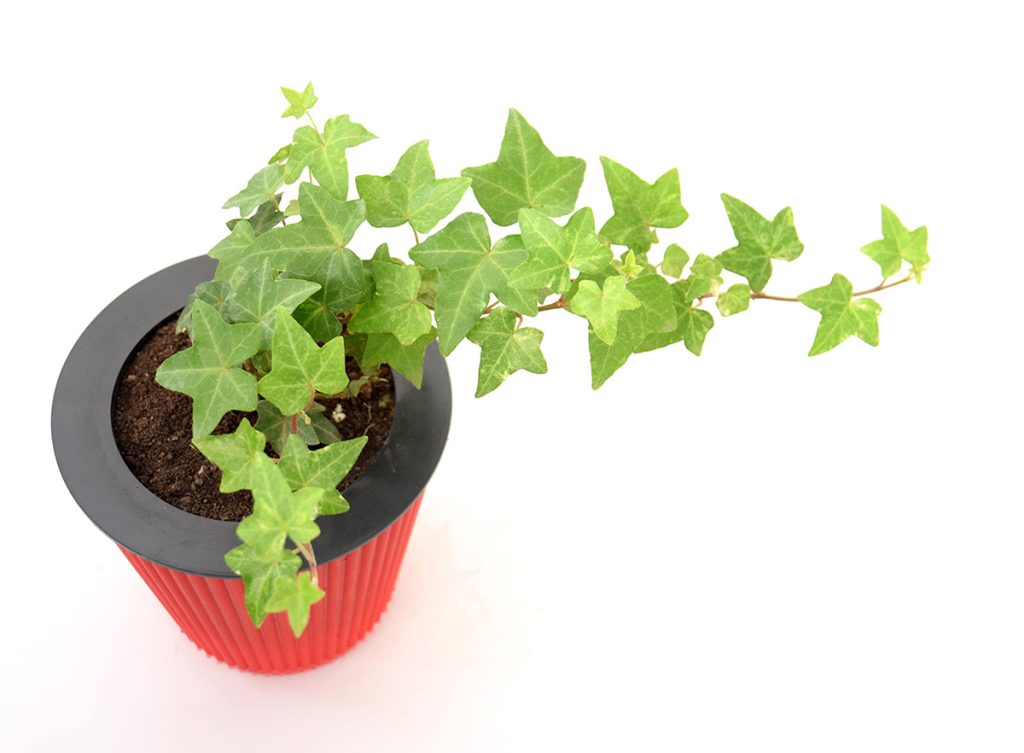
English Ivy is a charming vine, like a leafy cascade of green poetry. This leafy socialite adores climbing the ladder of success in indirect light, making it an evergreen guest of honor in your home.
Toxicity to pets: Toxic to pets.
Water requirements: Water weekly, reduce when temperatures drop.
13. Dieffenbachia

The bold Dieffenbachia has leaves resembling a painter’s canvas, adding artistic flair to your space. It has an artist’s temperament too. If it’s unhappy, it droops dramatically, demanding your attention. But don’t worry; a little TLC and it’ll spring back to life. Place in indirect light to keep its vibrant colors and perky demeanor.
Toxicity to pets: Toxic to pets.
Water requirements: Water once a week. Large plants will need a second drink.
14. Monstera

With its iconic leaves, this plant is instantly recognizable. The unique leaves develop splits and holes as they grow, adding intrigue to your indoor jungle. Monstera are extremely hardy and they can grow in low light.
Toxicity to pets: Toxic to pets.
Water requirements: Water every 1-2 weeks.
15. Maidenhair Fern
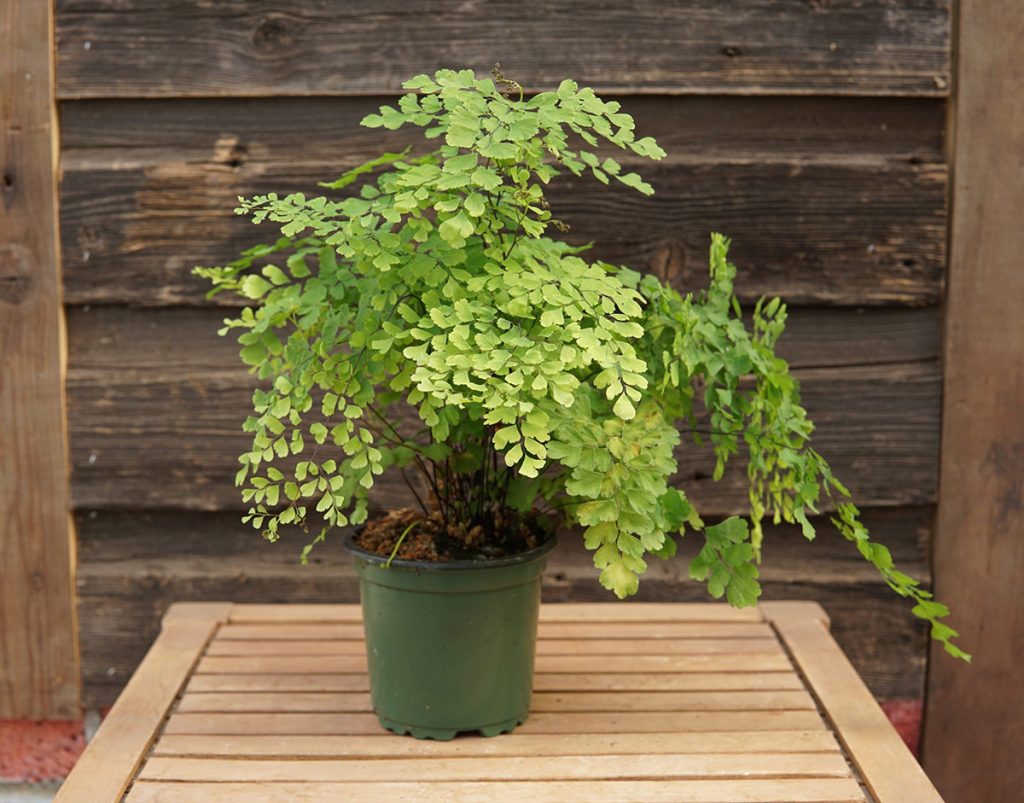
Dainty fronds, make the Maidenhair Fern the prima ballerina of houseplants, adding grace to any corner. If you can see inside your room without artificial lighting, it’s bright enough for a Maidenhair fern to grow. It loves humidity too, so it will put on a great show inside your bathroom.
Toxicity to pets: Non-toxic to pets.
Water requirements: Water daily or every other day consistently.
16. Money Tree
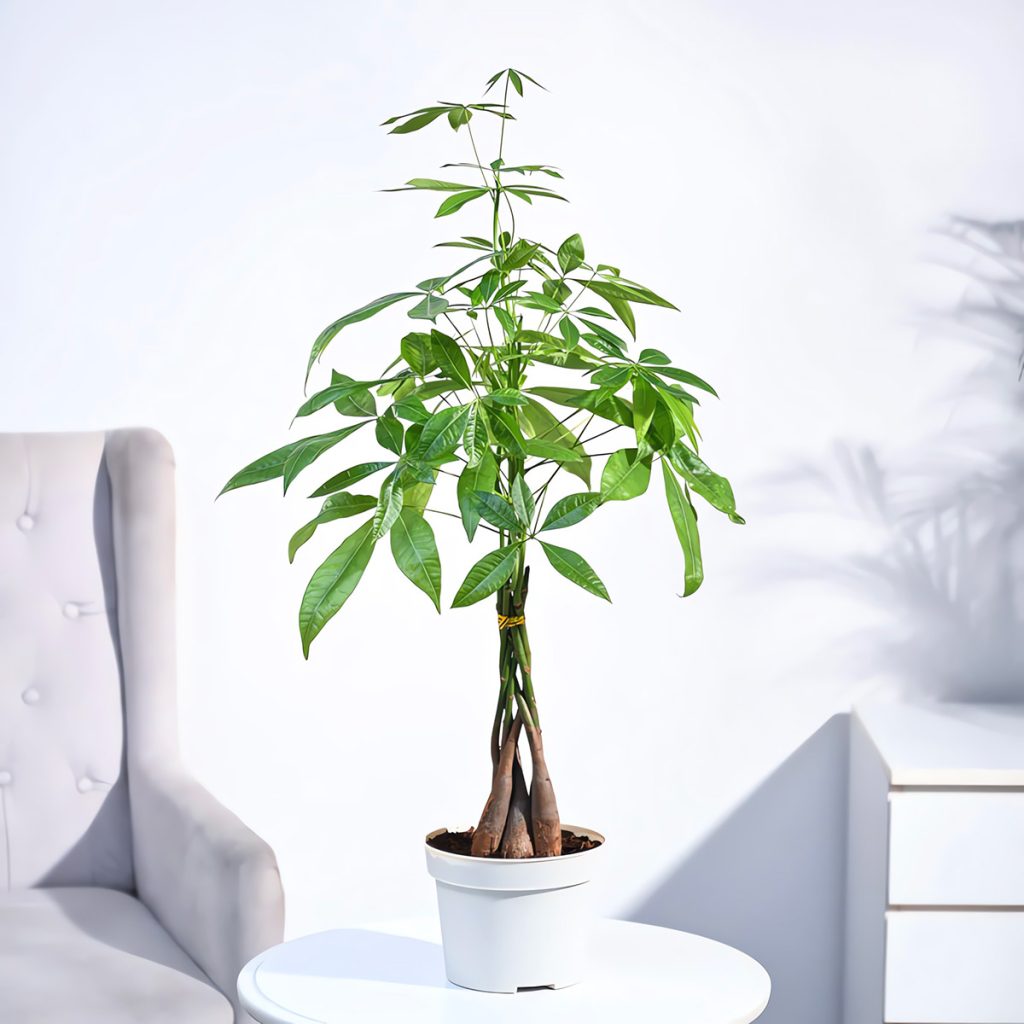
While the Money Tree enjoys gold sunbeams, it remains invested in lower light conditions too. It’s a shame that it won’t grow any actual money but it is believed to bring good fortune and positive energy.
Toxicity to pets: Non-toxic to pets.
Water requirements: Water every 1-2 weeks.
17. Calathea

The Calathea is a living canvas of nature’s creativity, delivering a burst of color as if stroked by a brush. While it prefers bright, indirect light to flaunt its patterns, it’s also adaptable to lower light conditions, bringing a touch of tropical beauty to even the coziest corners.
Toxicity to pets: Non-toxic to pets.
Water requirements: Water weekly, less in winter.
18. Nerve Plant
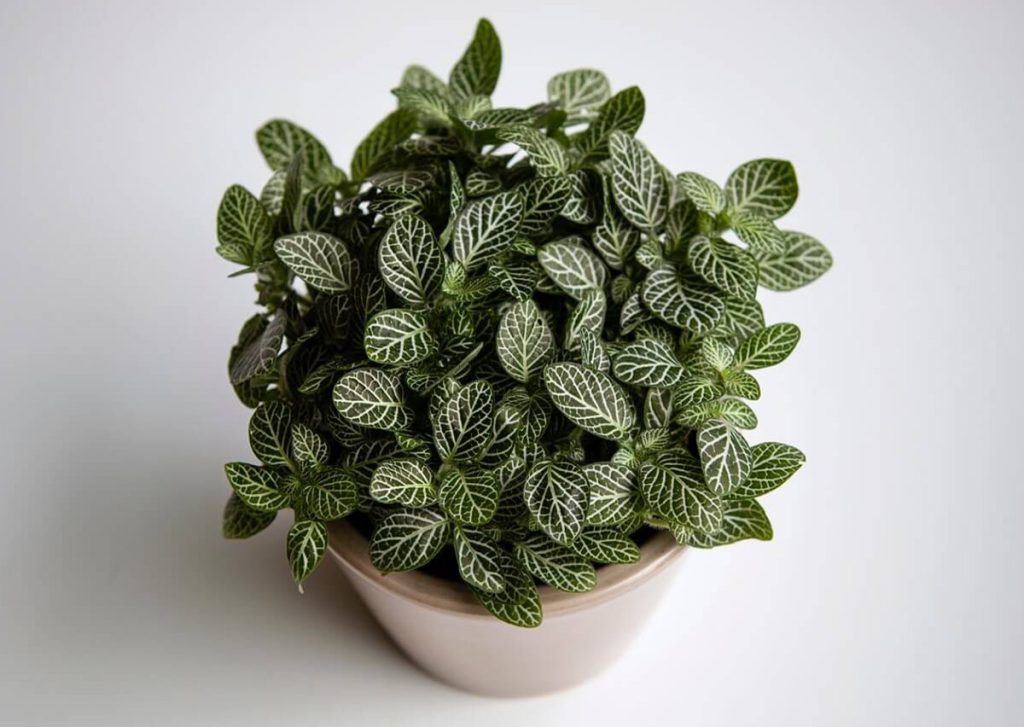
The Nerve Plant wears prominent white or pink veins on the outside of its leaves, forming intricate patterns. This showy fashionista likes bright lights but can also tolerate lower light conditions, proving that even divas have their laid-back moments.
Toxicity to pets: Non-toxic to pets.
Water requirements: Water every 3-4 days. Once every 2 weeks in winter.
19. Madagascar Dragon Tree

Meet the Madagascar Dragon Tree, the green pet dragon you always wanted! With its spiky foliage, it’s like a prehistoric pet with style. It can happily adapt to lower light conditions, proving that even dragons enjoy some downtime.
Toxicity to pets: Toxic to pets.
Water requirements: Water only when the topsoil is dry, usually once a week.
20. Mass Cane Plant
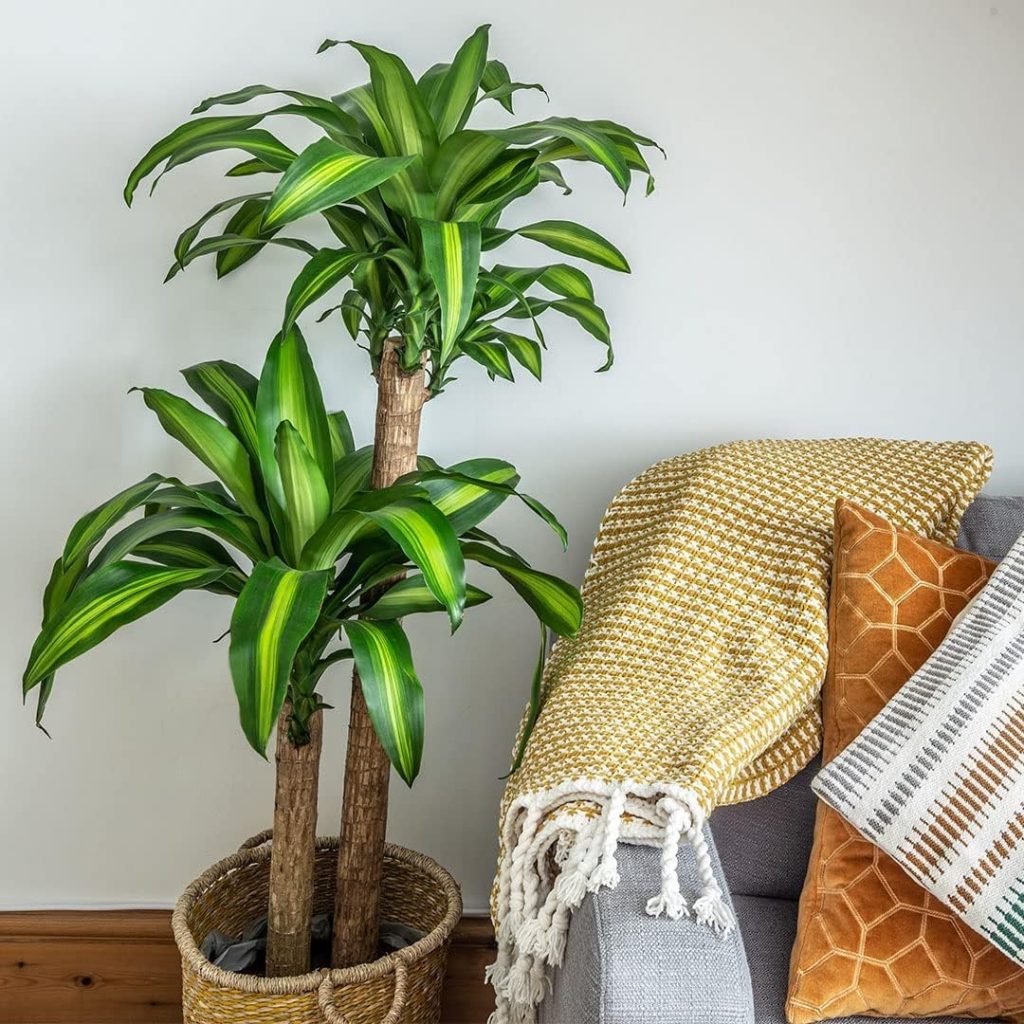
The Mass Cane Plant has tall, slender canes and crowns of lush green leaves that bring a touch of the rainforest to your home. It can adapt to low light conditions and has air-purifying talents, making it a hardy and helpful green companion in your home.
Toxicity to pets: Toxic to pets.
Water requirements: Water once a week.
21. Lemon Button Ferns

The Lemon Button Fern is a zesty little character with dainty, button-like fronds and a slight lemony scent. It can adapt to lower light conditions, making it a delightful addition that brings intricate detail to any corner.
Toxicity to pets: Non-toxic to pets.
Water requirements: Water at least once a week.
22. China Doll Plant
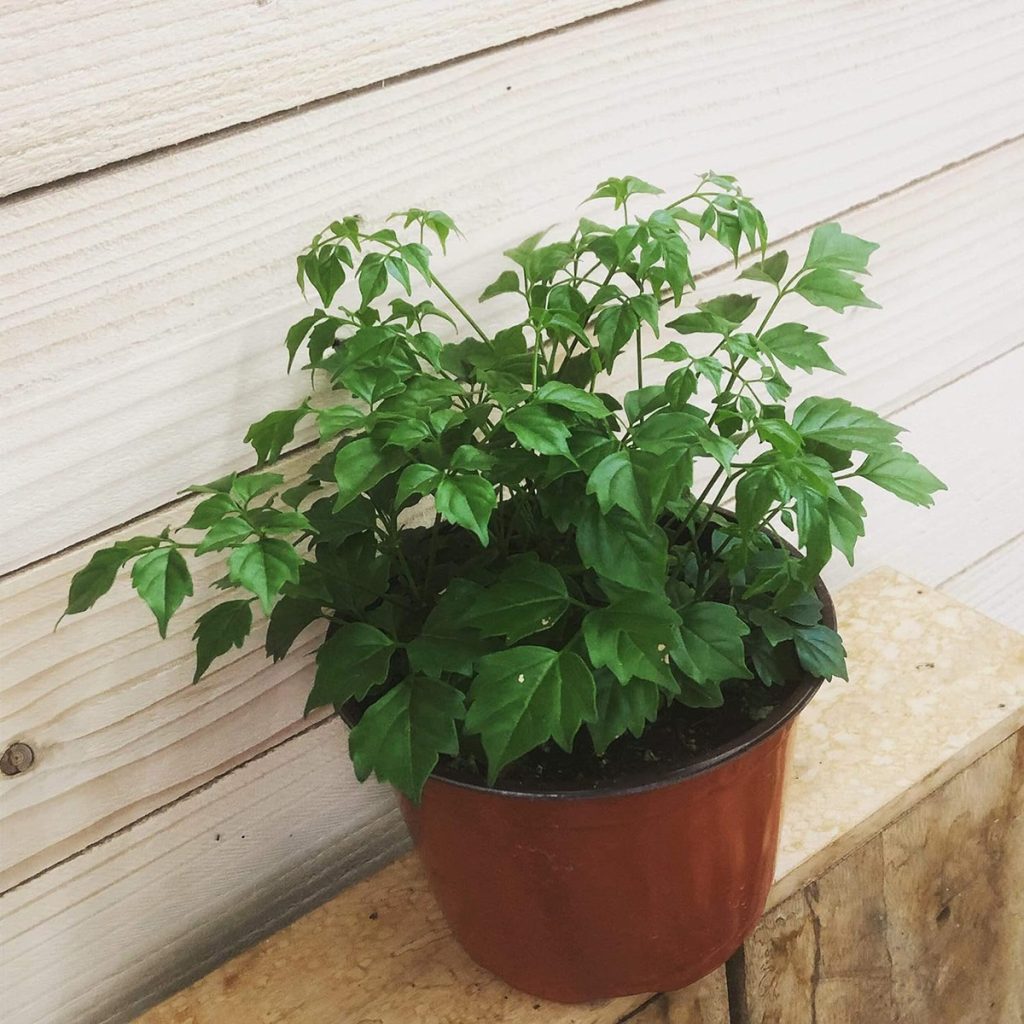
Fine, lacy foliage makes this plant the epitome of elegance. This delicate-looking doll can thrive in both bright indirect light and lower light conditions, meaning it can add grace and sophistication to your home, no matter the lighting.
Toxicity to pets: Non-toxic to pets.
Water requirements: Water once a week.
23. Dragon Tail Plant

The Dragon Tail Plant looks fierce and fabulous with long, sleek, and spiky leaves. This punk rocker of your plant crew flaunts its edgy style in bright light but is also a low-light legend that can thrive in the shadows.
Toxicity to pets: Toxic to pets.
Water requirements: Water once a week.
24. Syngonium ‘White Butterfly’
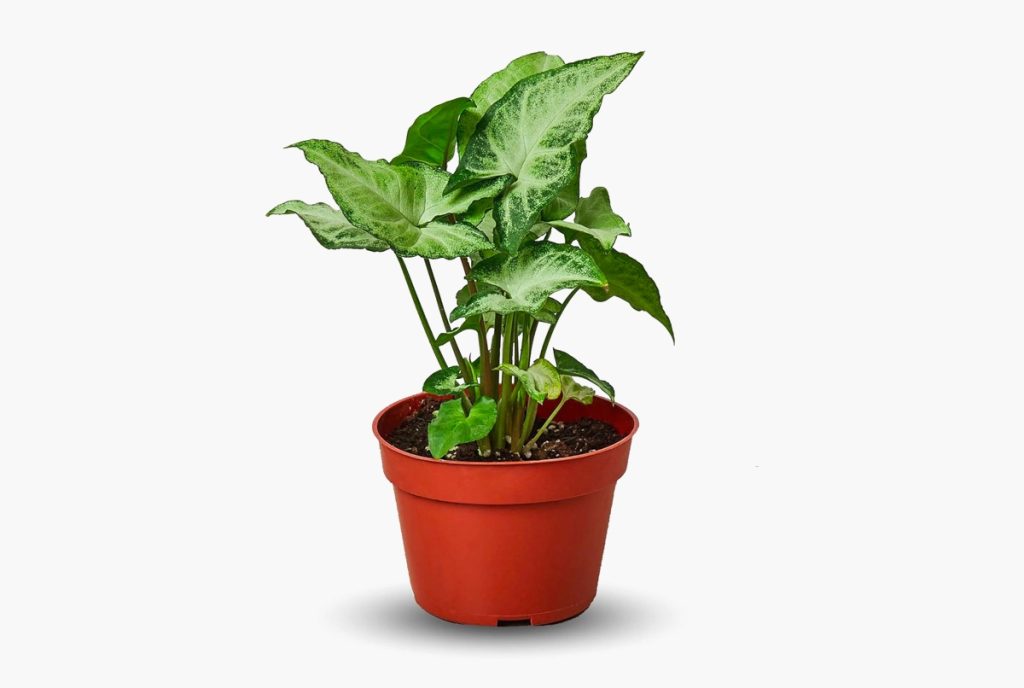
The Syngonium ‘White Butterfly,’ brings an enchanting flutter to your indoor garden with distinctive white and green leaves. It showcases its ethereal beauty in bright and low-light conditions alike, making it a mystical addition in any situation.
Toxicity to pets: Toxic to pets.
Water requirements: Water twice a week, only once in winter.
25. Stromanthe Triostar Plant
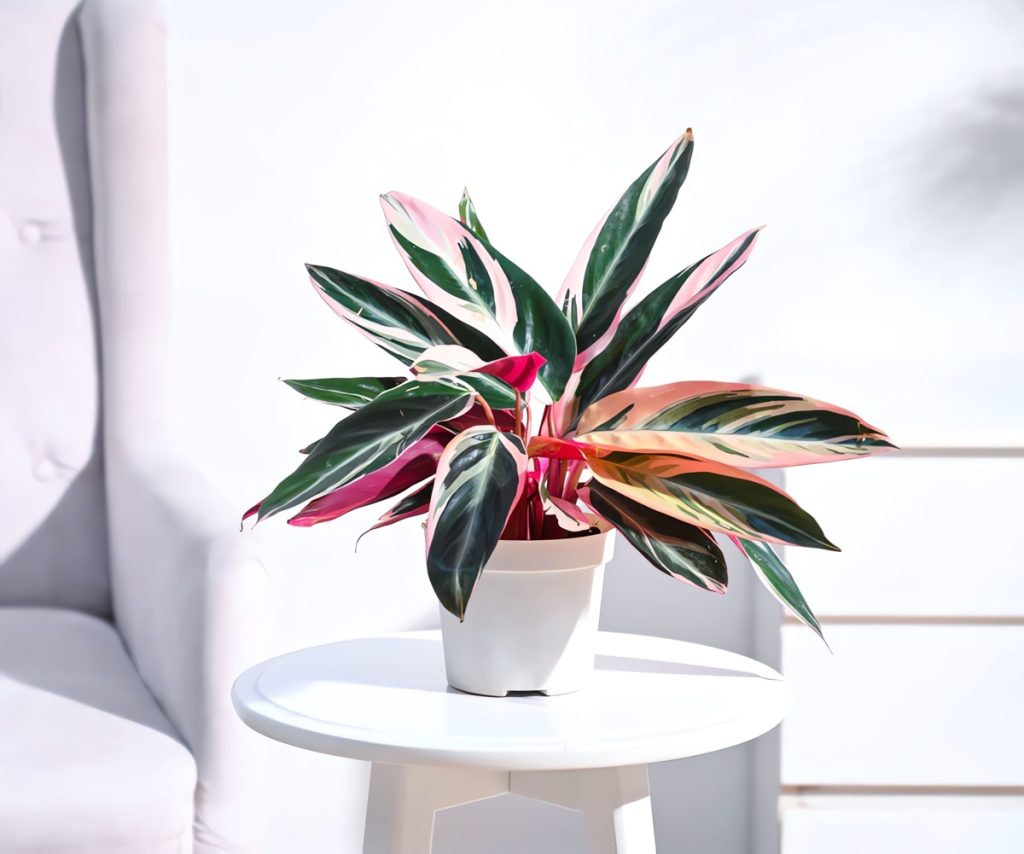
With leaves in mesmerizing blends of pink, green, and cream shades, the Stromanthe Triostar Plant is nature’s very own kaleidoscope. While it usually enjoys bright, indirect light to flaunt its hues, it’s also a low-light champ. Even tucked into a cool corner, it’s sure to gain admiration.
Toxicity to pets: Non-toxic to pets.
Water requirements: Water every 1-2 weeks, only when the soil feels dry.
26. Anthurium Plant
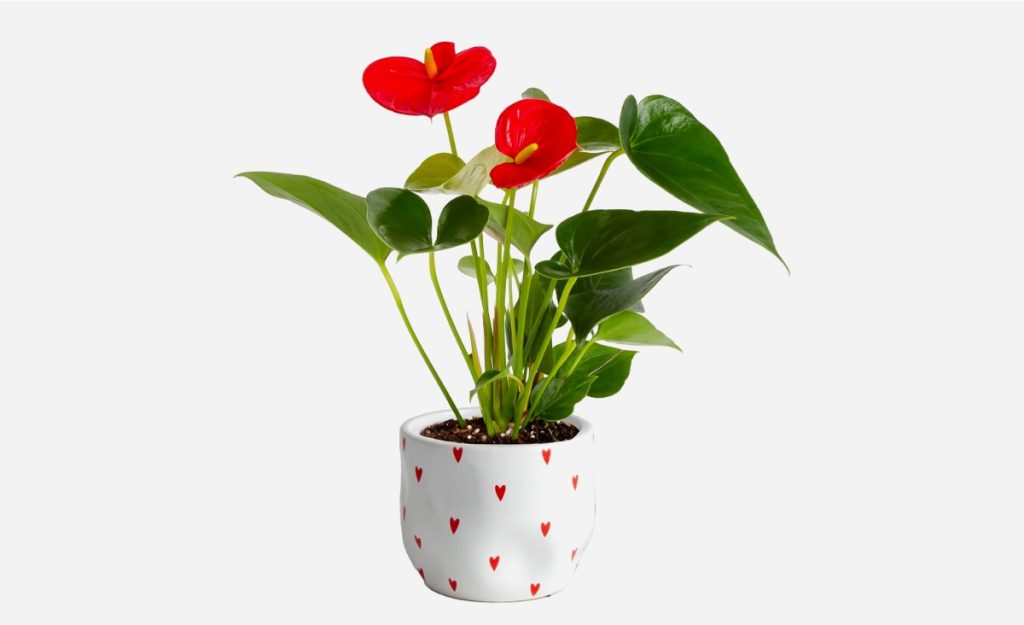
The Anthurium is a heart-shaped charmer with vibrant red or pink blooms, making your home look like Valentine’s Day all year round. In low light, the Anthurium Plant won’t bloom but it will endure, just like everlasting love.
Toxicity to pets: Toxic to pets.
Water requirements: Water with 6 ice cubes or half a cup of water once a week.
27. Fatsia Japonica
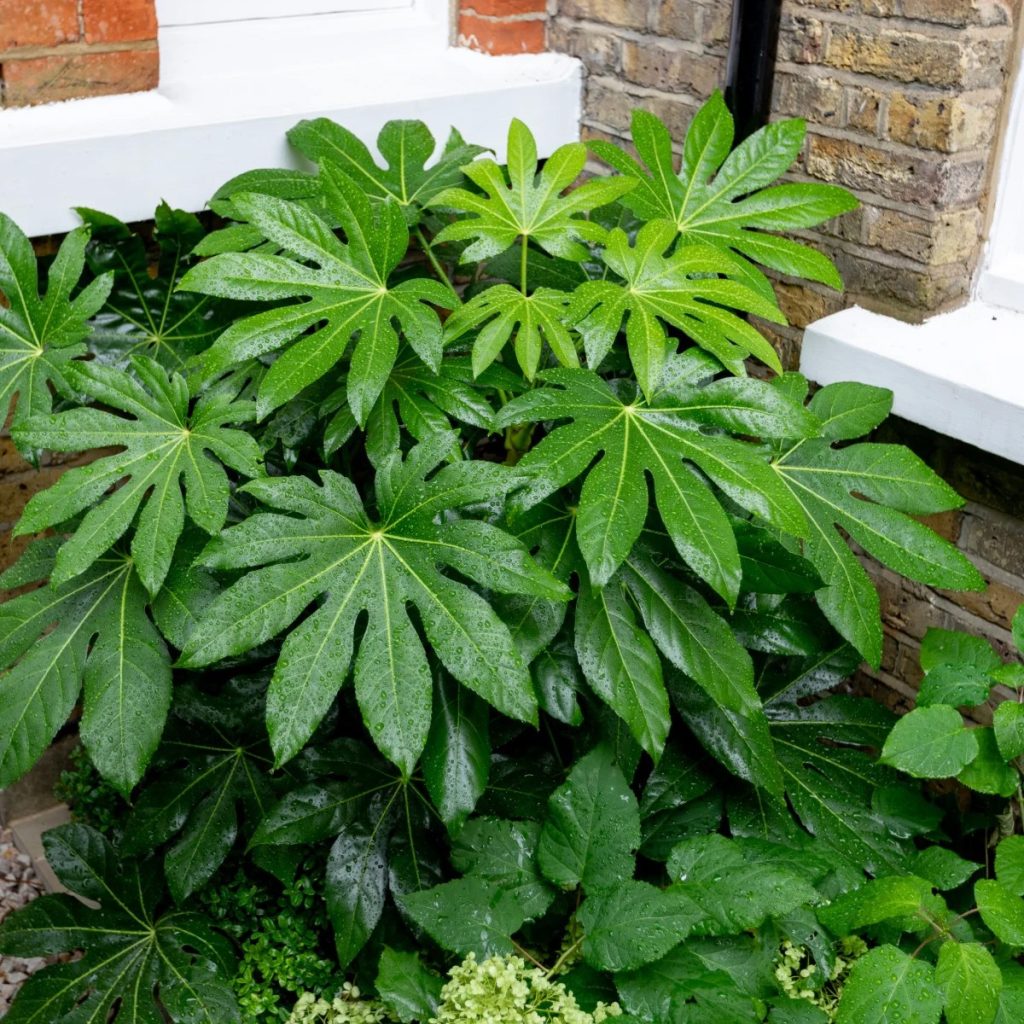
This glossy charmer with hand-shaped leaves provides greenery no matter the conditions. Whether it’s gracing a sunny spot or adding allure to a dim corner, a Fatsia Japonica is a handy friend to bring a bit of wild personality to your home.
Toxicity to pets: Toxic to pets.
Water requirements: Water when the soil is about 50-75% dry.
28. Baby Rubber Plant
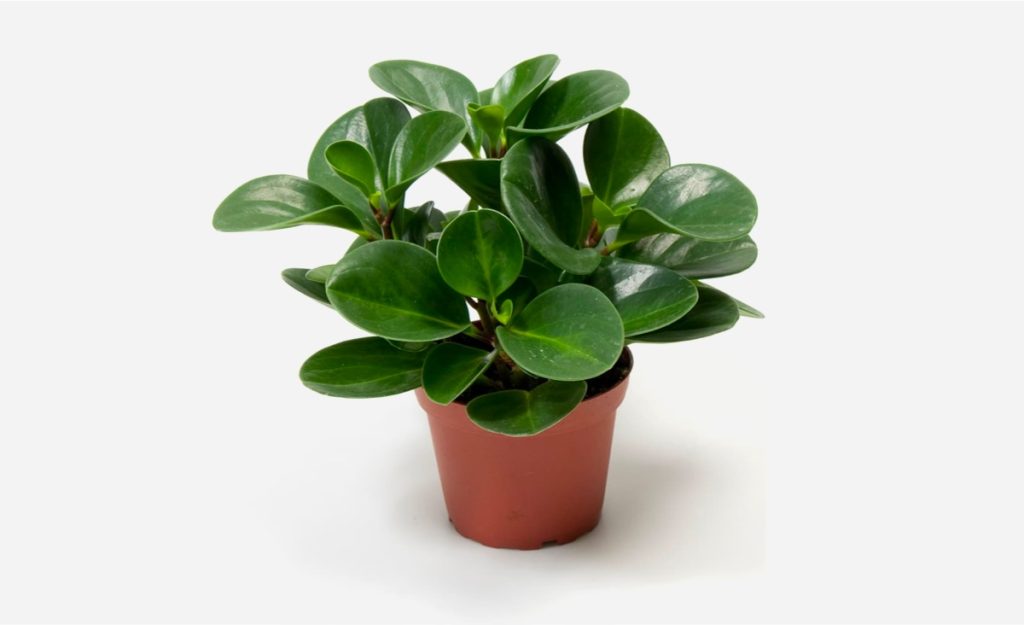
The Baby Rubber Plant is a petite powerhouse with full, leathery leaves, just like its larger rubbery cousin. It may be a baby but it’s not scared of the dark so it won’t throw a fit in low-light.
Toxicity to pets: Non-toxic to pets.
Water requirements: Water every 1-2 weeks.
29. Silver Satin Pothos

Silvery patterns give this elegant plant its pretty name. Make the Silver Satin Pothos the shimmering star of your indoor garden, even in low light conditions. With heart-shaped leaves adorned in silvery splendor, it’s like having a touch of moonlight in your home.
Toxicity to pets: Toxic to pets.
Water requirements: Water every 1-2 weeks.
30. Bromeliad Guzmania Plant
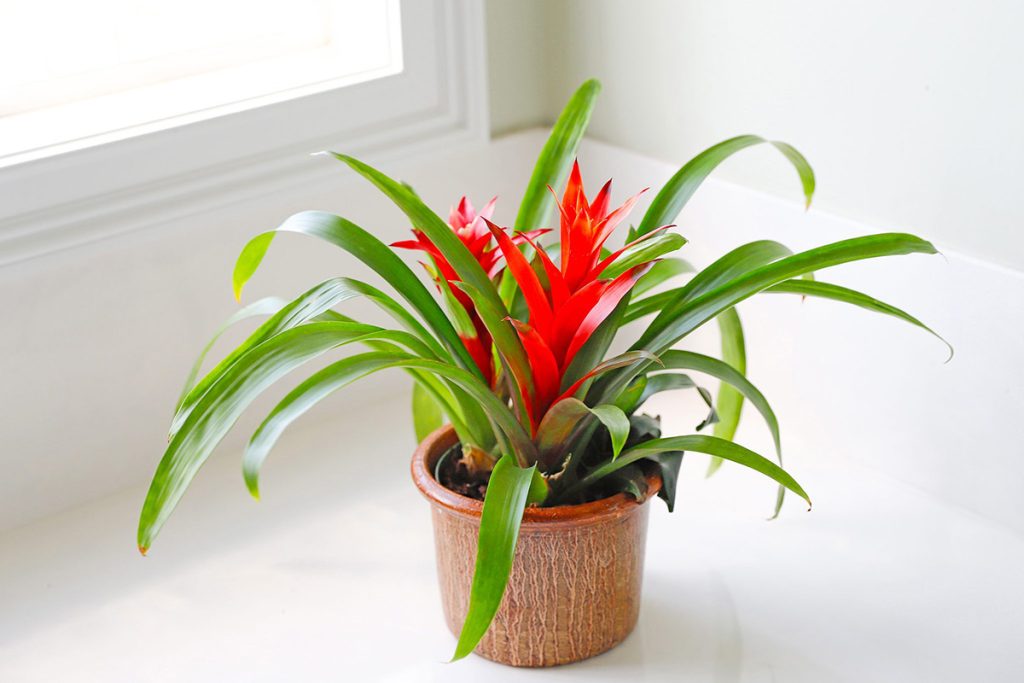
The flamboyant, vividly colored bracts of the Bromeliad Guzmania Plant bring a carnival of color to your home all year round. This perpetual party guest will continue to radiate color and cheer even in low-light conditions.
Toxicity to pets: Non-toxic to pets.
Water requirements: Mist once or twice a week. Fill/replace fresh filtered water in the central cup of the plant every week.
31. Swiss Cheese Plant
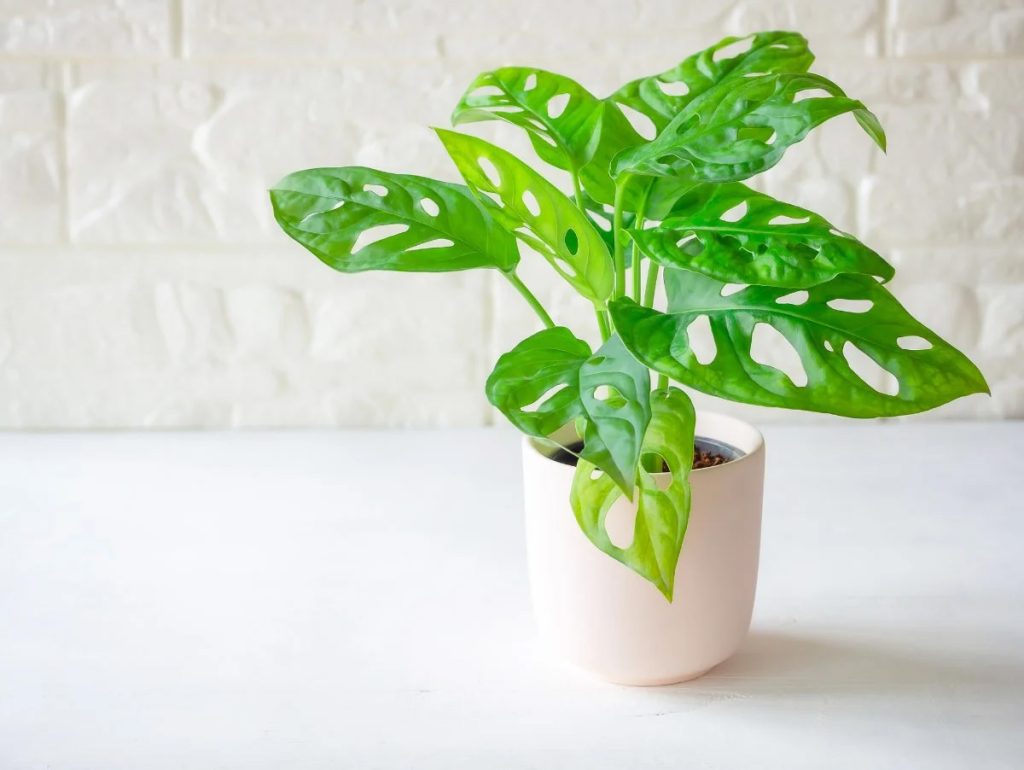
Holey leaves, resembling a piece of Emmental, make the Swiss Cheese Plant an easily recognizable botanical buddy. This statement-maker can adapt its exotic charm to low-level light situations with no problem. Nevertheless, if it’s too dark, the distinctive leaf perforations won’t develop.
Toxicity to pets: Toxic to pets.
Water requirements: Water every 2-4 weeks.
Recommended Reading: 32 Beautiful Indoor House Plants That Are Also Easy To Maintain











